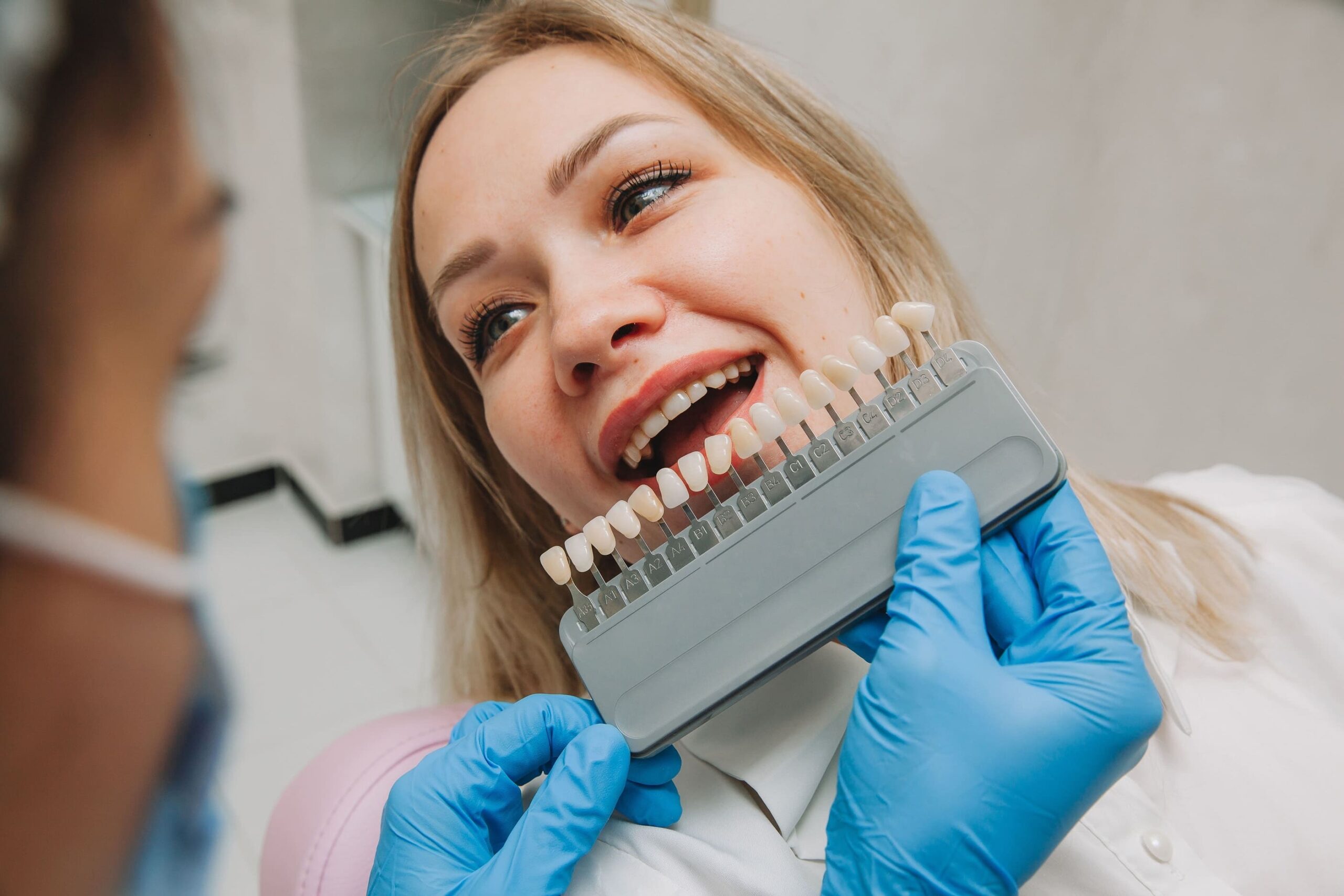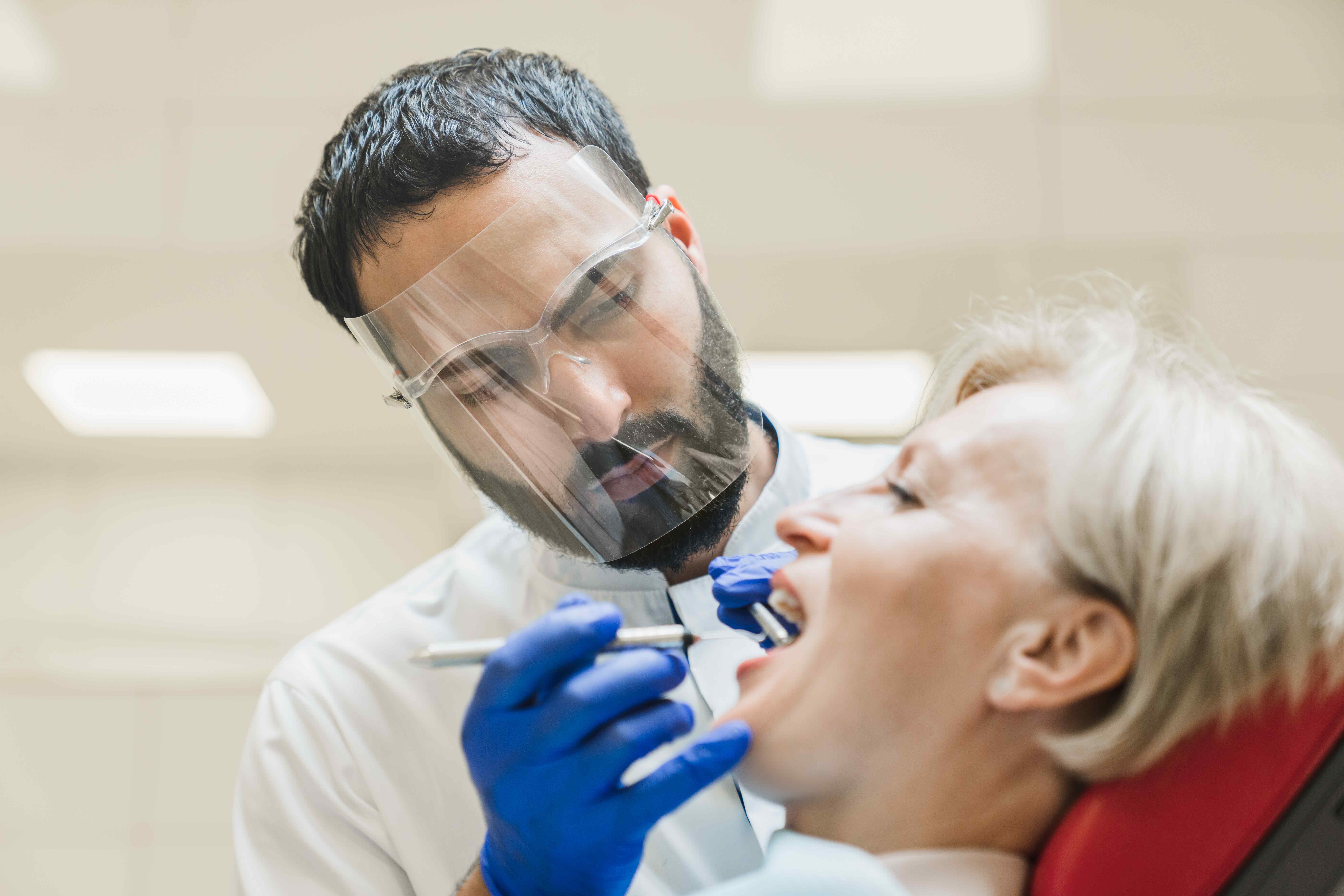Maintaining healthy gums involves more than just brushing, flossing, and regular dental visits. Increasing evidence…

The Science Behind Teeth Whitening: From Toothpaste to Professional Procedures
Are you looking to brighten your smile? Teeth whitening treatments have become increasingly popular as more people seek to achieve a whiter, brighter smile. From at-home options like strips, trays, and toothpaste to professional procedures in the Felton Dentistry office, there are a variety of ways to achieve a whiter smile. In this blog post, we will explore the science behind teeth whitening treatments, including how they work, the causes of tooth discoloration, and how to determine if teeth whitening is right for you. We will also discuss the importance of regular dental visits and cleaning to maintain the effects of teeth whitening treatments and overall oral health.
Understanding How Teeth Whitening Treatments Work
At the core of teeth whitening treatments, whether applied at home or in a professional setting, is the chemistry that targets tooth discoloration. The primary agents responsible for this transformation are hydrogen peroxide or carbamide peroxide. These substances delve deep into the enamel, the outermost layer of the tooth, to address stains at their source. Upon application, these peroxides break down into their active form, releasing oxygen molecules. These oxygen molecules then engage in a process of oxidation, which attacks the discolored molecules on your teeth, effectively breaking the bonds that hold the staining compounds together. As these bonds are broken, the staining compounds are dispersed and eliminated, rendering the teeth several shades whiter.
In addition to the chemical action of peroxides, certain teeth whitening formulations incorporate mild abrasives. These serve a dual purpose: they gently polish the surface of the teeth, removing superficial stains, and they create a slightly more porous enamel surface, which can enhance the penetration and effectiveness of the whitening agents. This meticulous blend of chemistry and physical action ensures that a wide range of discoloration, from surface stains caused by food and drink to deeper, intrinsic stains, can be addressed effectively. However, it’s important to note that the success and suitability of these treatments vary depending on the nature of the discoloration and your dental health, highlighting the importance of a personalized approach to teeth whitening.
At-Home Teeth Whitening Options: Strips, Trays, and Toothpaste
For those seeking a brighter smile from the comfort of their home, there are several convenient options to explore. Whitening strips, readily available and easy to use, are among the most popular. These are designed to adhere to your teeth, allowing the peroxide-based gel to work directly on the enamel, lifting stains over time. The simplicity of this method makes it a favorite for many looking to enhance their smile gradually.
Alternatively, whitening trays offer a more customized approach. These trays, which can be purchased over the counter or obtained from a dentist for a more tailored fit, are filled with a whitening solution and worn for specified periods. This method allows for an even application of the whitening agent across all teeth, making it effective for more uniform brightening.
Whitening toothpaste represents the most accessible form of teeth whitening, incorporating mild abrasives and chemical agents to remove surface stains with daily brushing. While the results may be more subtle compared to strips or trays, whitening toothpaste can be an excellent method for maintaining a whiter smile or gradually improving tooth color.
Each of these at-home treatments offers a practical solution for those looking to address tooth discoloration without the immediate need for professional dental services. Selecting the right option depends on personal preferences, the extent of discoloration, and sensitivity considerations, underscoring the importance of evaluating the merits and limitations of each method.
Professional Teeth Whitening Procedures in the Dentist’s Office
For those seeking immediate and noticeable results, professional teeth whitening offers a superior level of whitening that can’t typically be achieved with at-home kits. During an in-office whitening session, dentists use a higher concentration of bleaching agents, such as hydrogen peroxide or carbamide peroxide, than what is available in over-the-counter products. This allows for the removal of both surface and deeper, set-in stains within a short period, often in just one visit.
A significant advantage of professional whitening is the personalized care and attention from your dentist. Before the procedure, a dental professional will assess the health of your teeth and gums to ensure that you are a good candidate for whitening, reducing the risk of potential side effects like tooth sensitivity or gum irritation. During the procedure, protective measures are taken to cover your gums, and the bleaching agent is carefully applied to minimize any discomfort.
Some professional treatments incorporate the use of a specialized light or laser to activate the whitening agent, enhancing its effectiveness and reducing the time needed to achieve desired results. After the procedure, dentists can provide expert advice on how to maintain your newly brightened smile, including recommending specific oral hygiene products or follow-up treatments if necessary.
In addition to traditional in-office treatments, many dental professionals also offer customized take-home kits. These kits, though used at home, contain a professional-grade whitening gel and custom-fitted trays, designed for safe application and optimal contact with the teeth, offering a balance between the convenience of at-home treatment and the effectiveness of professional-grade products.
The Causes of Tooth Discoloration
Tooth discoloration can result from a variety of factors, some of which are within our control while others are not. One of the most common causes is the consumption of certain foods and beverages. Dark-colored drinks like coffee, tea, and red wine are notorious for staining teeth. Similarly, certain foods, especially those with intense color pigments, can leave stains on the dental enamel over time. Smoking and the use of tobacco products are also significant contributors to tooth discoloration, often resulting in a yellowed or brownish tint to the teeth.
In addition to lifestyle choices, the natural aging process plays a role in changing tooth color. As we age, the outer enamel layer of the teeth gradually wears away, revealing the darker dentin beneath. This can give the teeth an overall darker appearance. Genetic factors also influence the color and resilience of dental enamel, with some individuals naturally having brighter or thicker enamel than others.
Other contributors to tooth discoloration include certain medications, particularly tetracycline, which can cause discoloration as teeth develop in childhood. Excessive fluoride exposure, either from environmental sources or from excessive use of fluoride-containing products, can lead to fluorosis, which may manifest as white spots or streaks on the teeth. Lastly, poor dental hygiene, which allows plaque and tartar to build up on the teeth, can also lead to a dull or discolored appearance, underscoring the importance of maintaining a rigorous oral care routine.
Is Teeth Whitening Right for You?
Deciding to undergo teeth whitening is a personal decision that hinges on several factors, including the current state of your dental health and the nature of your tooth discoloration. Not all types of discoloration respond equally to whitening treatments. For instance, yellow-toned stains typically lighten well, while grayish or brownish hues might not see as much improvement. Additionally, restorations such as crowns, bridges, or veneers will not lighten with whitening treatments, potentially leading to uneven coloring across your smile.
Another consideration is tooth sensitivity. Some individuals may experience increased sensitivity or mild discomfort during or after whitening treatments. This is often temporary but can be a deterrent for those with already sensitive teeth. It’s also important to note that whitening treatments are most effective on natural teeth and might not be suitable for everyone, including those with severe dental issues or hypersensitivity.
A thorough evaluation by a dental professional at Felton Dentistry is essential before embarking on any whitening regimen. Your dentist can assess the health of your teeth and gums, identify the type of discoloration present, and recommend the most effective treatment while considering your overall oral health. This personalized approach ensures not only the safety of the whitening process but also its effectiveness, helping you achieve the best possible outcome for your smile.
The Importance of Regular Dental Visits and Cleaning
Maintaining a consistent schedule for dental check-ups and cleanings at Felton Dentistry is crucial for sustaining not only your oral health but also the radiance of your whitened teeth. These appointments allow for the removal of plaque and tartar build-up, which, if left unchecked, can contribute to discoloration and a range of dental diseases. Professional cleanings go beyond what daily brushing and flossing can achieve by effectively targeting the hard-to-reach areas that may harbor staining substances.
Furthermore, regular visits to Felton Dentistry provide an opportunity for us to monitor the health of your teeth and gums, ensuring that any potential issues are addressed promptly. During these visits, your dentist can also offer valuable advice tailored to your specific needs on how to extend the longevity of your teeth whitening results through proper care and suitable oral hygiene products. This proactive approach to dental care not only supports your overall oral health but also aids in maintaining a brighter, more confident smile.
Our caring team at Felton Dentistry is here to answer any questions about teeth whitening options for patients in the Chester, VA area. Contact us today to make an appointment for a consultation. Your dental health and bright smile are our priorities!


